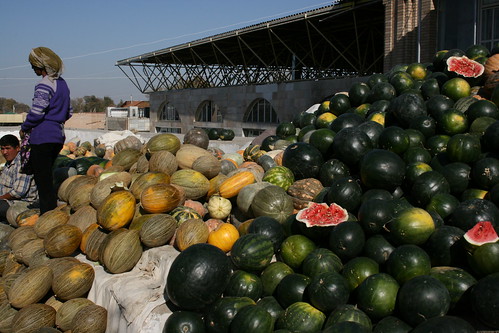 Happy St Patrick’s Day! Now, do I link to this, or this? No, wait… ((The picture is from Flickr.))
Happy St Patrick’s Day! Now, do I link to this, or this? No, wait… ((The picture is from Flickr.))
Nibbles: Yak, Flax, Diet, Naked chicks, Insectivory, Pastoralism conference, ICTs
- Know your yak breeds. h/t Brendan
- Neolithic linen.
- You are what your mother ate. Its all down to the Hnf4a gene.
- Naked chick necks? It’s all down to an interaction between the BM12 gene and retinoic acid receptors.
- Laos swallows the lets-eat-insects bait. Dutch follow suit?
- The future of pastoralism. It has one? Is this the alternative?
- Citizen science in national parks.
Nibbles: Mapping species, Paddies, Duplicates in genebanks, Chinese mystery millet, Cherimoya, ITPGRFA, AnGR lectures, Bulgur, Heirloom apples
- Biogeographic Information System Spatial Ecological Analysis of Megavertebrate Populations. Not agrobiodiversity by any stretch but stunning all the same, and a clarion call to our community to sort out Genebank Database Hell, surely.
- Traditional paddies as ecosystems. Great ones, too.
- Title says “seed banks susceptible to sham samples,” text says not really, and maybe it doesn’t matter much anyway. Our take from a few days ago.
- China’s millet useful in Africa. Which millet? Your guess is as good as mine.
- Cherimoya going seedless.
- Annex 1 list of International Treaty on PGRFA to expand? Well, maybe. Whatever, wow.
- Lecture materials on conservation and use of animal genetic resources.
- The ancient fast foods of Greece.
- Conserving heirloom apples. Nice gig if you can get it.
Nibbles: Mead, Treaty, Zoonoses, Flowery margins, Post-doc, Sacred Groves, Posters, Maize in Africa.
- Mead, part 4. You can find 1-3 yourselves.
- Plant genetic resources key to food security. The Jakarta Post gets it.
- Long, complex post from ILRI on zoonoses; diseases that infect people and animals.
- What are all the flowers for? The Provincial Agricultural Chamber of East Flanders seeks answers. h/t PAR.
- Wanna do a post-doc on Comprehensive modelling of agro-biodiversity in relation to seed exchange networks?
- Sacred groves threatened, by Times of India.
- Fabulous botanical posters, many featuring useful species, and all useful information. Of course tomatoes are fruits.
- I meant to write in detail about how Untapped crop data from Africa predicts corn peril if temperatures rise, but you know, life intervened.
Central Asian melons
Jeremy had one look at the map in the previous post and asked me whether it was possible that watermelon cultivation had collapsed in the Central Asia republics. Well, it has probably declined substantially, but clearly not entirely, as the photograph above suggests. You can read at length about the melons of Uzbekistan. And you can see below how things used to be, at least for other kinds of melons. Yes, old pictures of agrobiodiversity markets again.

